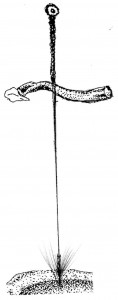
FOREWORD
In the lifetime of Albert Einstein, matter began to disappear as it was replaced by Energy as the central or vital factor in human (Western) thinking and behaviour. Prior to that time, Matter and its philosophy, Materialism, dominated the West and the rest of the world set out rapidly to follow. The result was alienation, acquisitiveness and violence unprecedented to human history and prehistory till, finally, it become a recognized threat to survival of the species and of life on this planet.
The revolution in human thinking, however, and the one implied in human behaviour, has not gone as far. Scientists still, almost completely, live in a pre-Einstein world. Theology finds it no easier to make the shift because human energy is disturbingly organic and sexual while philosophy wrestles with what Gregory Bateson called “Cartesian Dualism”. It could be expected that medical doctors would be amongst the first to begin the shift from matter to energy, with all its biological implications, but they are not.
Acupuncture raises the question of Energy in the human body and the necessity for it to be able to function within – as activity rising to a high point, then subsiding or relaxing, then rising again. The oscillation of Energy is the pulse of life. This principle of Yin and Yang, it appears, is the essence of the philosophy of Chinese Medicine – both ancient and modern – and of Chinese philosophy as a whole.
Energy within the body cannot be compartmentalized, or considered or treated as being in the mind only or in the body only. It cannot be comprehended by a science or philosophy, which is reductionist or positivist. The fact that Energy exists means that the human body, although constantly changing and fluctuating, is one living unit. It is not separable, either, from what is not within it, that is to say, from its environment, especially the human parts of that environment.
Health and, we may say, personal and human growth depends upon an energetic flow of experience between the individual and others (close body contact or intimacy, and the need for this may be the strongest of all animal instincts) and with the natural environment. In Western culture, it may be that artificial (“intellectual” and repressive) separations are now more damaging than ever before in human history.
In his book, Dr. David Tai explains, better than has been done previously, the significance of the theory of human energy and its use in diagnosis and clinical practice, which embodies “anatomy, physiology, pathology, biochemistry, clinical syndromes” and other medical concepts. He adds to it as well the significance of Emotions.
It may be that acupuncture, more than any other branch of medical practice, will show the importance of Energy and the holistic philosophy and practice. No other single aspect may be as important for the field of medicine and no other may help as much in opening up ways of creating personal and social health in our society. Dr. David Tai is well equipped to assist in this development and this book is an example of what needs to be done, because it is first of all a book of education for the healers and for those who need to be healed.
Dr. Jim Cairn, PhD
Canberra, 1987

Leave a Reply